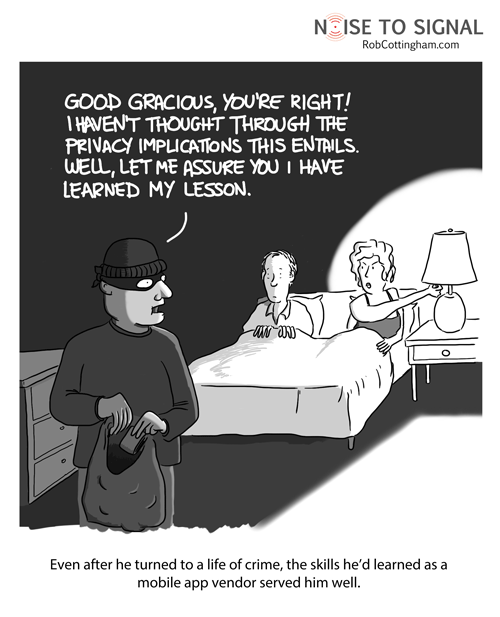I like to think of the apps I load on my mobile devices as guests I’ve invited over. I want them to be themselves, relax, chat… but I also want them to have some level of respect for the place.
I don’t expect to find them looking through my underwear drawer.
But some apps do just that. (Provided you’re willing to accept “underwear” as a metaphor for your address book.) The moment you head to the kitchen to whip up a plate of cheese and crackers, they’re peeking into your medicine cabinet, flipping through your diary or perusing that photo album of awkwardly-posed boudoir shots you’d swear you’d hidden at the back of the bedroom closet.
App vendors will tell you (as they nervously scrunch and unscrunch your “Incredible Hunk” mini briefs) that they’re just trying to be helpful. And they would never, never use this information that they’ve just sent back unencrypted to their servers for anything except improving your user experience. Possibly also for a funny skit they’re doing for next week’s we-just-got-our-first-round-of-funding party. Did you notice your underwear is now sorted by texture? Isn’t that helpful?
And in the vast majority of cases, I think developers actually are trying to be helpful. They’ve had a cool idea, something that could be useful, and they can implement it with just a few lines of code. When most of your job involves seeing data in terms of its structures and relationships, it’s easy to miss the question of how that data’s owner feels about it.
Of course, there are vendors whose motives aren’t nearly as pure, and involve aggregate data mining (in the mountain-top-removal sense of “mining”) at best.
The point is, get out of my underwear drawer. Unless I’ve explicitly invited you over for that purpose, and believe me, it’s a very select few guests who fall into that category. (They’re the ones who get the good cheese and crackers.)
Boundaries, people.

